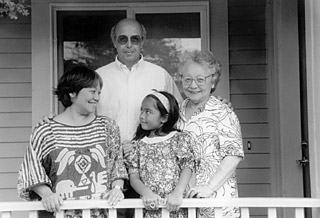The Aesthetics of Trauma and the Politics of Grief
Aesthetic questions and aspirations might well seem frivolous or inappropriate at a time of mourning. And yet, aesthetic and ethical questions help us understand how our perceptions are affected and structured by public catasrophes such as this one. More than just evocative and representational power, images also quickly assume symbolic power, Barbie Zelizer has argued, saying that: “the photo’s significance . . . evolved from the ability not only to depict a real-life event but to position that depiction within a broader interpretive framework” (p. 8). Thus photos which are initially documentary assume a commemorative or symbolic role. Angel Franco, a photographer for the New York Times reporting on his work on September 11 at Tisch School, says he quickly realized that this is no longer journalism but history. “These are like the images I grew up watching in television documentaries,” he said. But, for Zelizer, photos are “markers of both truth-value and symbolism” and thus the images of the attacks have come to signify nothing less than a modern apocalypse. But which photographs? Is it really, like the “Here is New York” exhibition implies, a democratic process in which any image is as powerful as any other, or do certain images have elements that make them immediately iconic? “Our intention,” write the organizers of “Here is New York,” “is to display the widest possible variety of pictures from the widest possible variety of sources, believing as we do that the World Trade Center disaster and its aftermath has ushered in a new period in our history, one which demands that we look at and think about images in a new and unconventional way.” This in the effort also to look at and think about what has happened in totally new ways. But is that really possible?
Every major historical event since the beginnings of photography has bequeathed a limited number of photographs which have become emblematic for it – the picture of the little boy with his hands up in the Warsaw ghetto, or of prisoners in stripe uniforms, for the Holocaust, the picture of the naked girl running down the road after a napalm attack for the Vietnam War, the picture of birds in an oil spill for the Gulf War. Which will be the icons for September 11? What elements determine this process of reduction and iconicization? And in what ways will this process be in fact determined by aesthetic factors? It was fascinating to me that the four photographers interviewed on “Charlie Rose” agreed that the icon would be the picture of the three firemen raising the flag on top of the rubble because it echoes the famous prize-winning photograph of American GI’s raising the flag at Iwo Jima. In their search for the one lasting iconic image they were looking for the conventional, the coded, not the new. Is this familiarity reassuring, inscribing this event into a known visual register and thus a known history? And does it thus perhaps shield us from the shock of the suddenness and unexpectedness of the devastation? In the aftermath of an event as monumental as this one, we may need, eventually, to reduce the number of available images to just a few lasting ones that will structure our cultural memory. But we are not yet at that point.
As I consider the many images I have seen, I think about the many that were never taken, and the many that have not yet come to public view. What they contain we can only imagine. Thus I was at the “Here is New York” gallery when a rescue worker came to donate 200 images he had taken during the three weeks of working there. “All the guys there have cameras with them,” he reported. Initially hesitant to take pictures, he said that he was convinced by others who said that “you have to remember.” The picture he felt most embarrassed about, he said, was one of four rescue workers, hugging and smiling for the camera, smoking cigars (for the smell, he said). He thought this would be controversial but there they all were, together in this other world, what else could they do but smile for the camera in their togetherness? When these and all the other pictures taken “down there” in this “other world” get developed and disseminated, what else will we get to see? How will these pictures be used? And what images have we not yet seen, or will we never get to see? The debates about what is and is not appropriate to show to a public in mourning are as instructive as the images themselves.



